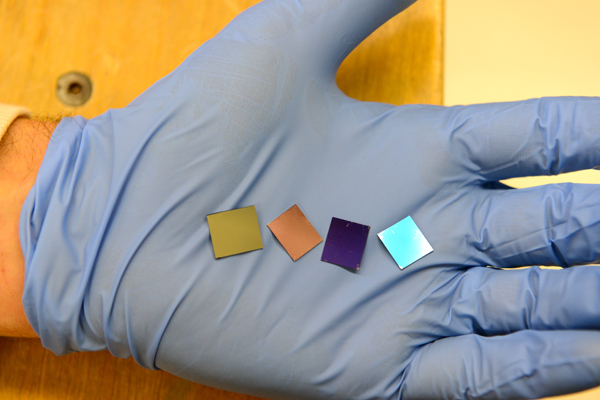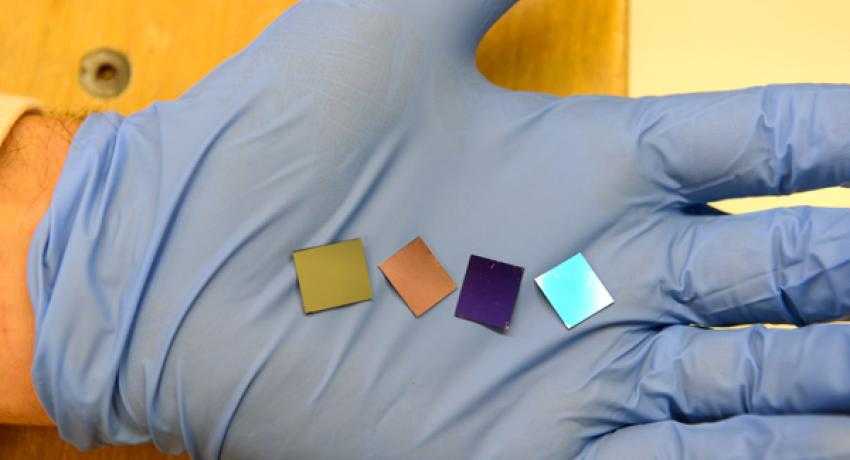Stanford researchers create world’s thinnest solar absorbers
 Last week Stanford scientists published work that in the journal Nano Letters that makes most thin-film PV devices look like a whale. The new gold nanodots that the researchers created are each about 14-by-17 nanometers and coated in tin sulfide—you could fit thousands of the dots across a human hair. They’re also incredibly efficient at absorbing light. By creating such thin materials, the researchers could significantly reduce the need for materials in a PV device, reducing its cost.
Last week Stanford scientists published work that in the journal Nano Letters that makes most thin-film PV devices look like a whale. The new gold nanodots that the researchers created are each about 14-by-17 nanometers and coated in tin sulfide—you could fit thousands of the dots across a human hair. They’re also incredibly efficient at absorbing light. By creating such thin materials, the researchers could significantly reduce the need for materials in a PV device, reducing its cost.
"Our results show that it is possible for an extremely thin layer of material to absorb almost 100 percent of incident light of a specific wavelength," said Stacey Bent, a professor of chemical engineering at Stanford and a member of the research team. "Achieving complete absorption of visible light with a minimal amount of material is highly desirable for many applications, including solar energy conversion to fuel and electricity."
Postdoctoral scholar Carl Hagglund and his team tuned the gold nanodots to absorb reddish-orange light waves about 600 nanometers long, according to Stanford. "Much like a guitar string, which has a resonance frequency that changes when you tune it, metal particles have a resonance frequency that can be fine-tuned to absorb a particular wavelength of light," Hagglund, lead author of the study, said. "We tuned the optical properties of our system to maximize the light absorption." That said future versions would likely have to respond to more of the light spectrum to harness more energy.
"The coated wafers absorbed 99 percent of the reddish-orange light," Hagglund said. "We also achieved 93 percent absorption in the gold nanodots themselves. The volume of each dot is equivalent to a layer of gold just 1.6 nanometers thick, making it the thinnest absorber of visible light on record—about 1,000 times thinner than commercially available thin film solar cell absorbers." In fact each wafer had about 520 billion nanodots.
Now the team will work on making semiconducting layer to make a fully functional PV cell with the nanodots. "We are now looking at building structures using ultrathin semiconductor materials that can absorb sunlight," Bent, co-director of the Stanford Center on Nanostructuring for Efficient Energy Conversion (CNEEC), said. "These prototypes will then be tested to see how efficiently we can achieve solar energy conversion."
Looking forward the team is considering materials other than gold for the devices to help reduce costs and improve the technology further. For instance, the teams said silver has a better optic qualities. Despite reaching submicroscopic levels of thickness, the team believes they can make the device even thinner.




